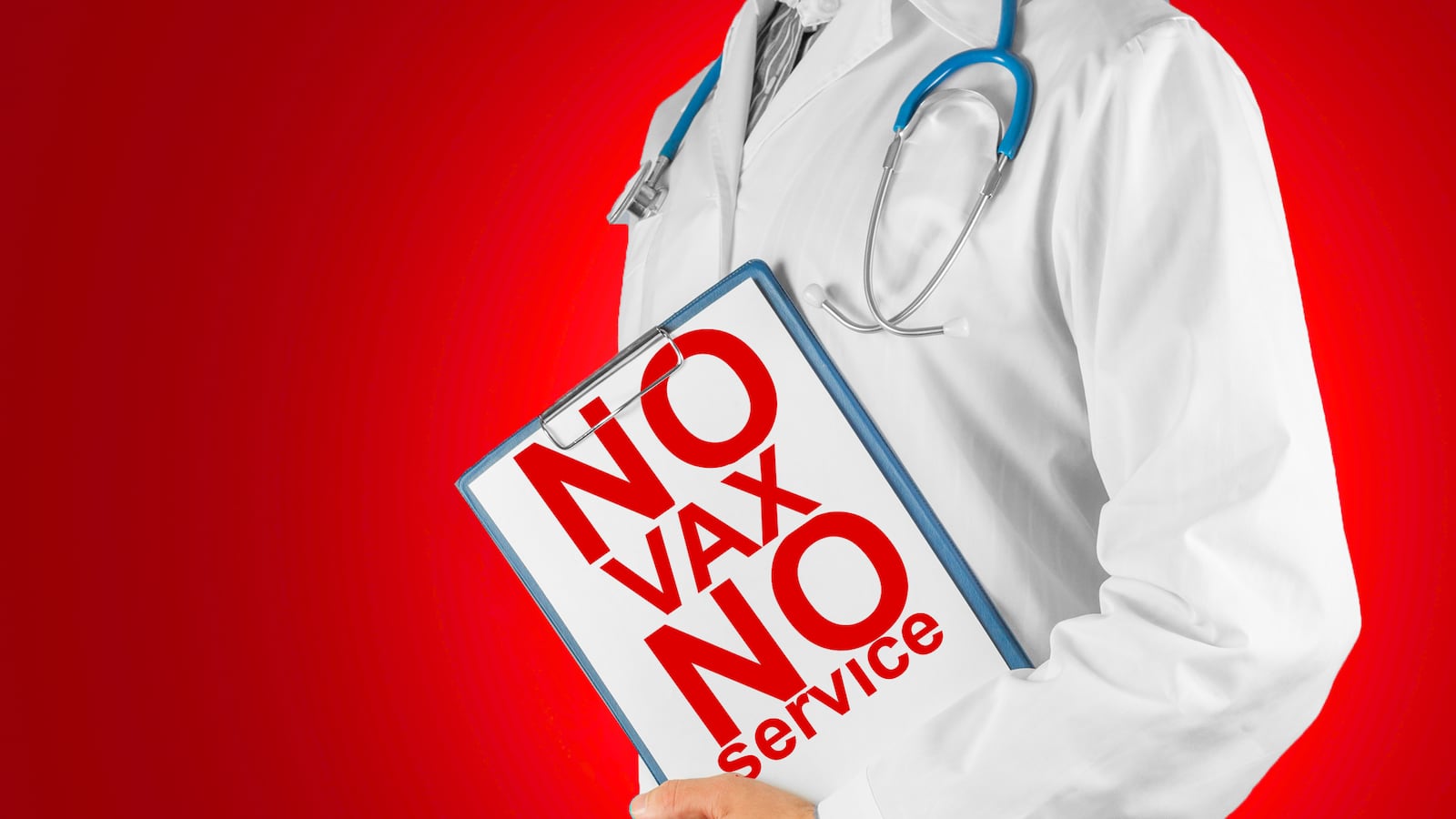When you take a stand about something, it’s nice to look around and realize you’re not standing by yourself.
According to a study in the journal Pediatrics, about 20 percent of pediatric practices dismiss patients whose parents refuse one or more of the standard vaccines recommended during infancy. Mine would likely count as one of them. Though we don’t technically “fire” patients for not getting vaccinated, we don’t accept them to our practice in the first place, which is close enough.
As the authors of the study note, this puts my practice somewhat at odds with the American Academy of Pediatrics (AAP). In a set of guidelines issued in 2005 for dealing with the problem of vaccine refusal, the AAP advised that “pediatricians should avoid discharging patients from their practices solely because a parent refuses to immunize his or her child.” Though this was softened a couple of years ago to saying we should “endeavor not” to discharge such patients, the underlying message was pretty much the same.
This new report provides more detail about the kinds of pediatric practices that have policies that run counter to the AAP’s stance. (The study also included family practitioners, but so few have such policies that they were excluded from further analysis.) Pediatricians who don’t accept vaccine-refusing patients are more likely to be in private practice, as I am, rather than in a public clinic or hospital-based setting. They are also more likely to be in the South, and to be located in states with more stringent laws surrounding vaccine exemptions.
The results about private practices aren’t particularly surprising, as such practices likely have more sway in setting their standards than those with outside administrators. The correlation between a state’s laws and the rates of physicians barring non-vaccinators was more interesting to me. In states with laxer restrictions, only 12 percent of practices dismissed such patients. In states with the strictest laws, including those that do not allow so-called “philosophical exemptions” (such philosophies being essentially “I don’t wanna”), the number of practices like mine rose to 28 percent.
The authors of the study suggest various hypotheses for this correlation. It could be that states with looser restrictions have less of a societal norm for vaccinating, thus making it harder for practices to create policies that run counter to it. On the flipside, a combination of stricter laws and more practices that decline to allow vaccine refusal may be a mutually-reinforcing way of keeping the social norm intact.
Some time ago, I wrote about why my office has this policy, in particular why a refusal to vaccinate one’s kids reflects a problematic willingness to reject medical science as a whole. While I stand by every word of what I wrote, it’s certainly not the most comfortable position to stand apart from the AAP. Among the many responses I saw to that piece was one from a fellow pediatrician whose writing I admire immensely, who took to HLN and pointedly disagreed with me. (I found that precisely as delightful as you might suspect.)
While the majority of pediatric practices appear to accommodate parents who refuse some or all vaccines, it’s heartening to know that we’re not a truculent little island here in my office, either. I agree with the pediatrician quoted in Forbes who stopped accepting vaccine-refusing patients after a child in the grip of whooping cough walked through his door, and he realized an infant too young to be vaccinated could have been exposed to a life-threatening illness there in his own waiting room.
The state where I practice does not allow for “philosophical objection,” and does require parents citing religious objections to proffer a document stipulating so in order to enroll unvaccinated kids in school. Vaccination rates in my area are therefore quite robust. But that’s hardly an argument to relax the standards for my practice. Outbreaks of vaccine-preventable illnesses like measles are becoming increasingly common, and may only be a short plane ride from a popular destination away.
I never want to have to explain to the parents of a kid with leukemia that their child was exposed to measles during a check-up. I don’t kid myself that I can keep my office totally free of risk, but insofar as I have any capacity to mitigate it, I will make it as safe as possible.
The current AAP recommendations may in some part be informed by concern that by refusing to accept vaccine-refusing families, we may create pockets of under-vaccinated kids who are potential populations for future outbreaks. This new study allays that fear by demonstrating that areas with the lowest vaccination rates are also the ones with pediatricians least likely to turn away vaccine refusers. Conversely, “no refusers” policies are most likely in populations that aren’t at particular risk for forming such pockets. If anything, such policies may be an incentive for families in any given area to vaccinate, though the authors of the study prudently suggest that possible relationship needs to be explored further without drawing any conclusions.
In the future, I would be thrilled if the AAP were to revise its guidelines to accommodate perspectives such as mine and a significant number of other pediatricians’. I certainly understand and respect the decisions of those who continue to accept vaccine-refusing families into their practice. I strongly believe my practice’s decision not to is likewise understandable and worthy of respect, and it’s good to see that many of my peers agree with me.






